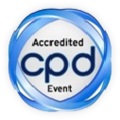
Yoshiharu Mitoma
Prefectural University of Hiroshima, Japan
Title: Solvent-free and non-heating decontamination processing of radioactive cesium in contaminated soils using nano-Fe/Ca/CaO/[PO4] dispersion
Biography
Biography: Yoshiharu Mitoma
Abstract
Subsequent to the tragic Fukushima Daiichi nuclear plant event, large areas of urban and agricultural soils were polluted with radioactive 134Cs and 137Cs, which have been trapped in various clays. A conventional decontamination method is to suspend the polluted soil in water to remove fine soil particles. However, this method entails several shortcomings such as large amounts of wastewater involved or its freezing during winter. Therefore, much attention has been devoted to dry decontamination methods. Given these circumstances, we developed a new method using nano-Fe/Ca/CaO composite material as a reagent for the immobilization and separation of stable and radioactive cesium species in contaminated soil under dry conditions. After grinding contaminated soil with nano-Fe/CaO, nano-Fe/Ca/CaO, and nano-Fe/Ca/CaO/[PO4], approximately 31, 25, and 22 wt% magnetic soil fractions were separated, with 133Cs immobilization of about 78, 81, and 100%, respectively. When actual radioactive cesium contaminated soil obtained from the Fukushima region was treated with nano-Fe/Ca/CaO/[PO4], approximately 27.3/72.7 wt% of magnetic and non-magnetic soil fractions were separated. The highest amount of entrapped 134/137Cs was found in the magnetically separated soil fraction of lowest weight (i.e. 80% Cs in 27.3% soil). The Cs immobilization in either magnetic or non-magnetic soil fractions was 100%. The morphology and mineral phases of the nano-Fe/Ca/CaO/[PO4] treated soil were characterized using SEM-EDS, EPMA, and XRD analyses. EPMA and XRD patterns indicate that the main fraction of enclosed/bound materials on treated soil includes Ca/PO4 associated crystalline complexes. These results suggest that a simple grinding treatment with nano-Fe/Ca/CaO/[PO4] might be a highly efficient immobilization and separation method for actual radioactive-cesium-contaminated soil.

